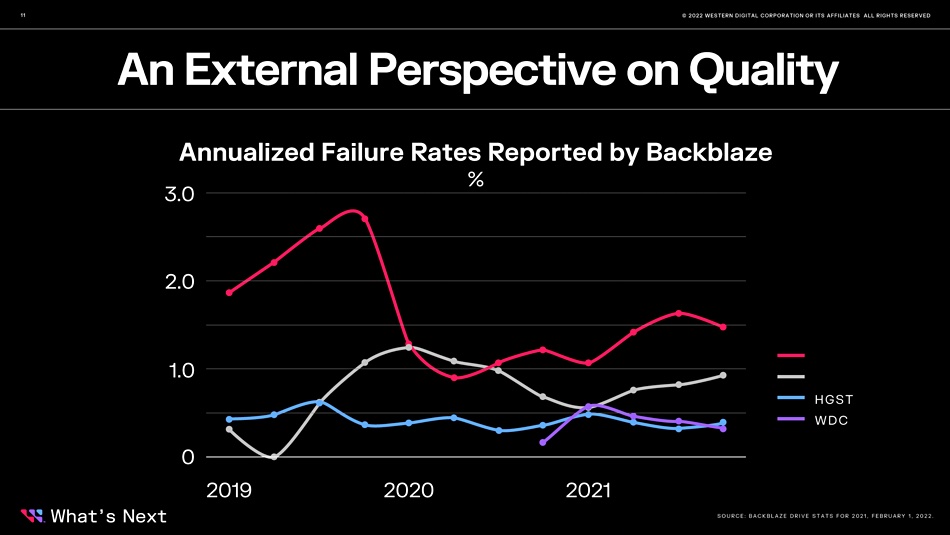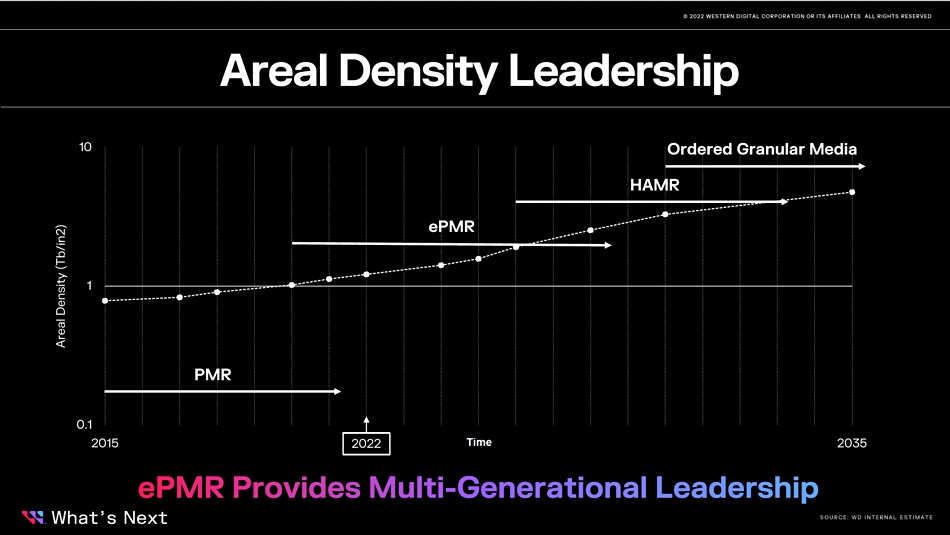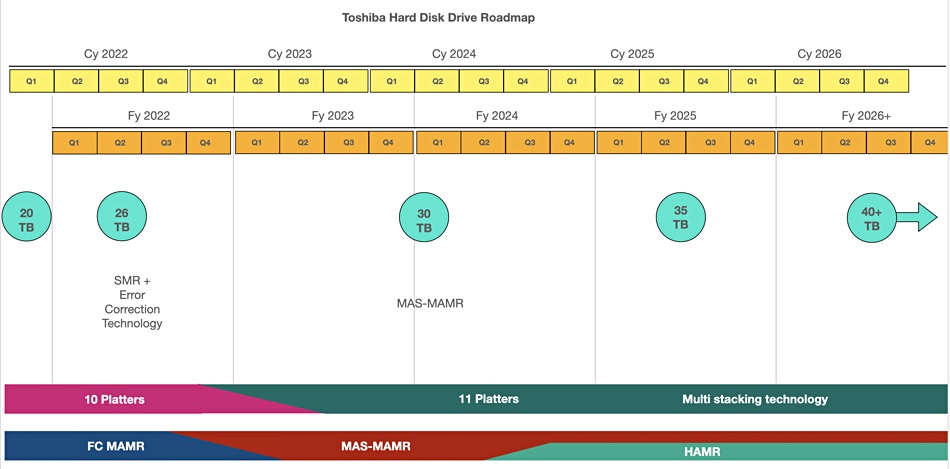Western Digital execs trumpeted its disk and flash/SSD roadmaps and growth prospects at a May 10 Investor Day event that was perhaps overshadowed by the break-up proposal from activist investor and 6 percent stakeholder Elliott Management.
The company’s top brass dished out the good news about technology, product, and market progress to raise investors’ confidence. WD has disk and flash business units and their technology and products are key to the future, with disk the mature element and flash the relative youngster. Underlying these is a single Technology & Strategy operation headed by Siva Sivaram. We’ll look at the disk and flash roadmaps in two separate articles, with disk first, adding in Sivaram’s points where relevant.
Ashley Gorakhpurwalla heads the disk business unit, which has just launched 22TB ePMR/OptiNAND drives, using energy-assisted but otherwise conventional Perpendicular Magnetic Recording (ePMR) technology, and a 26TB shingled magnetic recording (SMR) variant. Both are the highest-capacity drives in their segments.
He pointed out that Western Digital has the lowest HDD failure crate as evidenced by Backblaze drive life statistics:

Gorakhpurwalla said that a 50TB archive disk drive was coming with lower performance than SMR drives. This echoes what he mentioned to Blocks & Files in December last year, along with 11-platter drive possibilities. He said that second-gen ePMR technology designs can lift capacity to 24TB and 30TB-plus without shingling. Moving to higher capacities will then require HAMR technology.
He expects the pricing gap between Western Digital’s ePMR and HAMR disk drives and QLC (4 bits/cell) SSDs to be at a 9x premium for the SSDs through to 2027. That means disk will stay on as the best price/performance choice for nearline capacity data, with SSDs being chosen for faster data access and where portability and robustness matter, such as external and consumer storage.

Sivaram saw HAMR disk drives appearing around 2026 with a new technology, Ordered Granular Media, coming after that. We don’t know anything about that but the term seems similar to the Bit-Patterned Media (BPM) concept that Seagate and Western Digital were talking about in 2015 as a post-HAMR tech. Toshiba was involved with BPM in 2011. It has a long history.

SMR tech was introduced in 2015-2016 but is only now poised to go into volume use (in hyperscaler customers’ datacenters), Sivaram said.
Sivaram also mentioned the platter count increasing inside disk drive enclosures, through using thinner platters that comprised of an ultra-thin aluminium-magnesium substrate. This echoes what Gorakhpurwalla said about 11-platter drives.

Toshiba also has 11-platter drives in its disk roadmap. It has a 26TB SMR drive planned for release this year and HAMR technology appearing in 2024/2025, a year at least before Western Digital. It will be interesting to see who brings out a 30TB conventional drive first, Western Digital or Toshiba, which has one planned for the 2023/2024 crossover period.
We don’t yet have visibility into Seagate’s latest HDD roadmap and so cannot compare its likely capacity progress to those of Western Digital and Toshiba.
Part two of this article will look at Western Digital’s flash and SSD roadmap.








